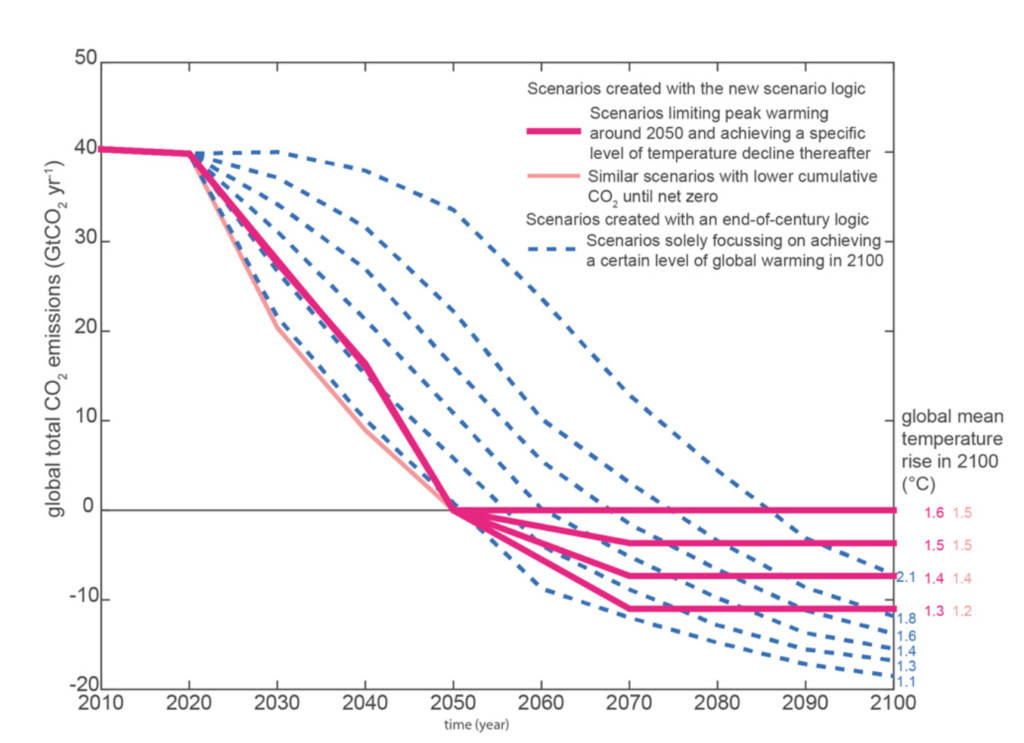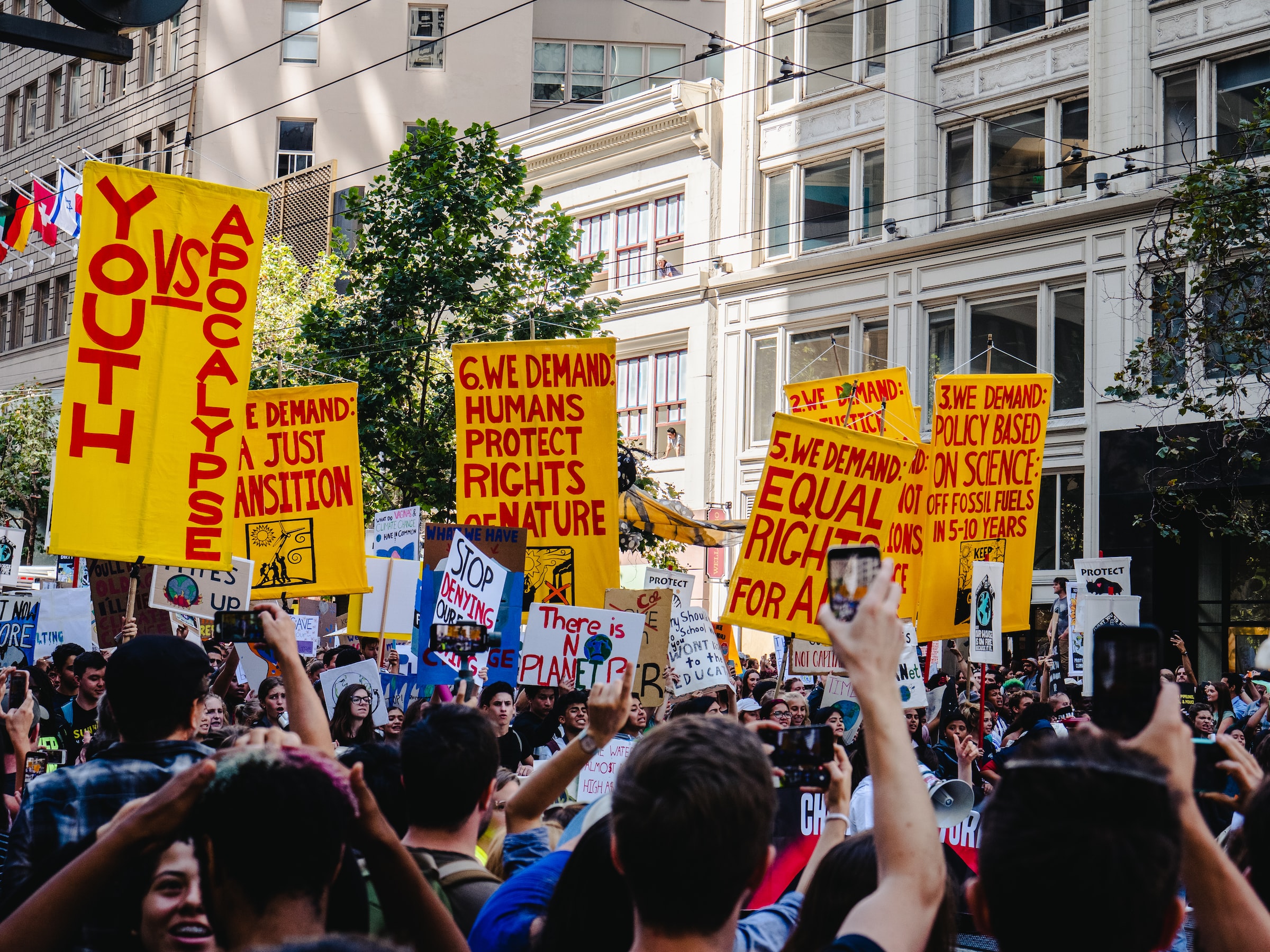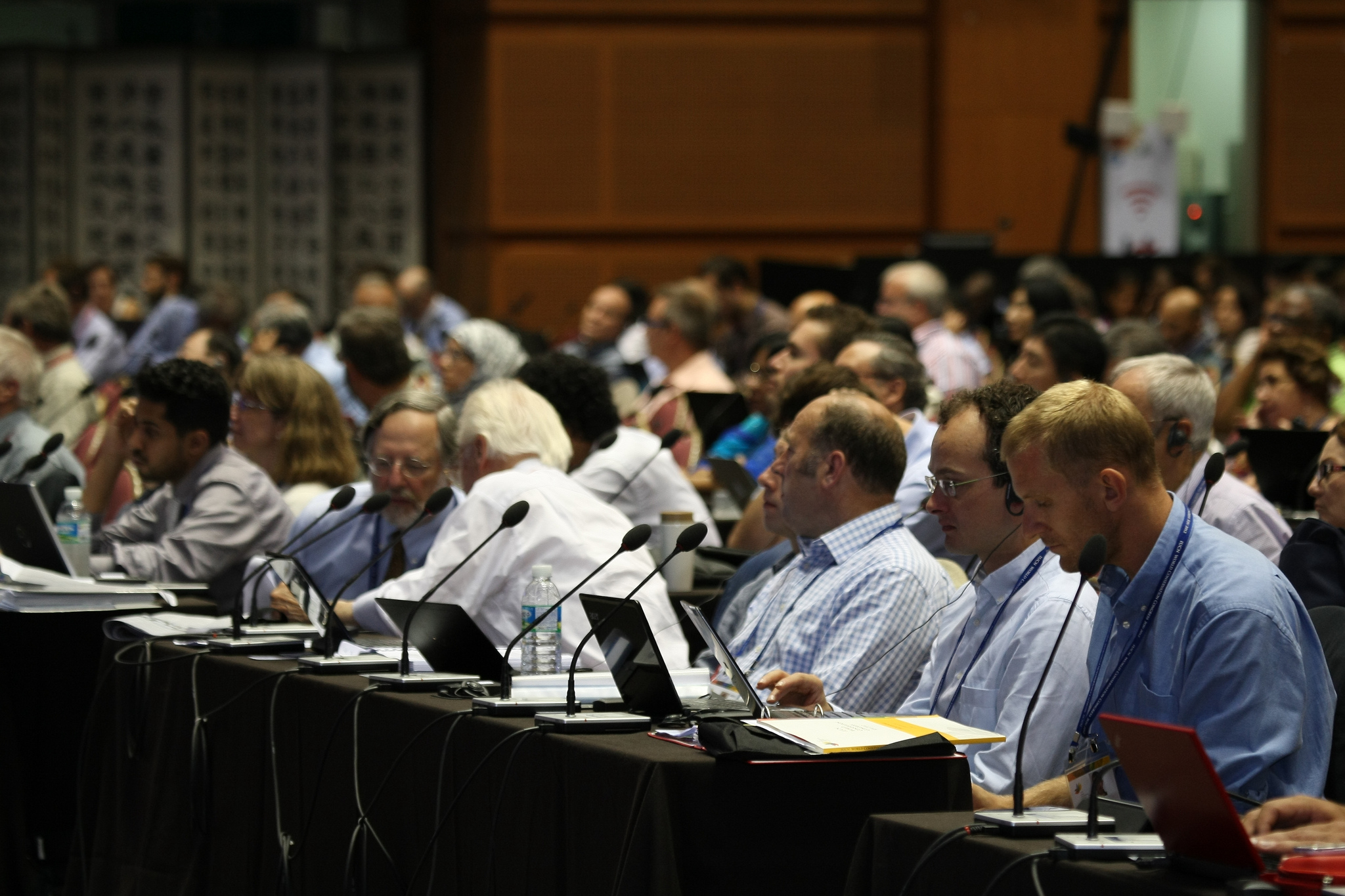By focusing on climate outcomes in 2100 scenarios used to inform climate policy can lead to risky strategies, potentially ignoring higher-than-acceptable mid-century warming and over emphasising negative carbon emissions in order to counter the initial “overshoot phase”. A new study published in Nature highlights the importance of focusing efforts on achieving global net zero emissions as fast as possible and how this can leave less of a burden on future generations.
Climate change mitigation scenarios address the varying way in which human development and societal choices will affect each other and the natural world, whilst keeping global warming and harmful emissions within agreed limits. To create these scenarios scientists and economists join to develop “integrated assessment models” (IAMs) that inform policy makers’ decisions on climate strategies. These are used to address questions concerning climate change, including how to respect the Paris Agreement targets at the lowest possible cost.
However, these scenarios are often based on the central tenet of achieving climate objectives by 2100, therefore leaving space for mid-century rises in temperatures, delaying climate action and hence putting more pressure on future generations and vulnerable populations. This leads to what is known as intergenerational bias, which refers to the idea of fairness among generations in the use and conservation of the environment and its natural resources; and interregional bias between regions of the world, in the present or at any moment in time.
[Climate change mitigation scenarios] tend to put a strong burden on future generations and vulnerable populations by delaying action, allowing near-term warming in excess of those limits and then relying on negative emissions techniques later, to undo their initial shortfall in emissions reductions.
Dr Joeri Rogelj
Why is this a problem
A new study, led by Imperial College London and the International Institute for Applied Systems Analysis, published in the scientific journal Nature, problematises the focus on 2100 in climate scenarios as “a very risky strategy”. This is because focusing on scenarios built for end of the century goals brings modellers to articulate the cheapest way of hitting climate targets by 2100, which can lead to a period of “overshoot” in which global average temperatures rise above target levels for a few decades before being brought back down again. This is at the cost of reaching net zero emissions as fast as possible and remaining within a maximum temperature ceiling.
Furthermore, these models rely strongly on bringing temperatures back down through the use of negative emissions as a way of removing excess carbon from the atmosphere. This approach is problematic because, although some removal of CO2 from the atmosphere will be necessary to offset unavoidable nonzero sources, an over reliance on these methods could prove fatal as they are yet to be developed and proven as effective tools (such as direct air capture) and therefore place an unacceptable burden on future generations. A clear instance of impingement on intergenerational equity.
A change of focus
The paper offers alternatives to these issues by imposing a limit on peak warming and the temperature evolution thereafter, suggesting that scientists should run climate models with a different goal in mind: how to reach peak net zero emissions as fast as possible (for example by 2050), whilst keeping peak warming within the 1.5 or 2C limits.
“The need to stabilize warming more quickly is paramount, and therefore we suggest a focus on reaching net zero carbon emissions as a key milestone of any climate strategy,” states lead author Dr. Joeri Rogelj.
The paper’s researchers subject their approach to well-known computer climate models and standard socioeconomic development scenarios to demonstrate how this change in initial assumptions affects outcomes. The result is that when removing the 2100 focus and replacing it with 2050, and therefore ensuring peak warming is small and happens sooner, global warming can be brought in check without having to resort to the substantial application of negative emissions.
The chart below shows how scenarios that keep warming to well-below 2C, without the reliance on net-negative CO2 emissions in the long term (pink lines), differ from standard scenarios that focus on 2100 objectives (dashed blue lines).

Bringing equity into the picture
Halting climate change is widely recognised as a question of urgency and inserting issues of equity in climate scenarios helps highlight how speeding up net zero emission objectives can play a fundamental role. Changing the focus of climate scenarios, from reaching climate goals by 2100 to focusing on net zero emissions by 2050, is just one example of how changes in basic assumptions can create substantial differences in outcomes and therefore dictate policy measures.
Shifting the focus to more short-term warming will underpin the next assessments by the Intergovernmental Panel on Climate Change (IPCC), and we hope it will also help policymakers formulate realistic strategies […] Policymakers want to know how and when we can reach net zero carbon, and our new logic for strategies could make these questions answerable.
Dr Joeri Rogelj






